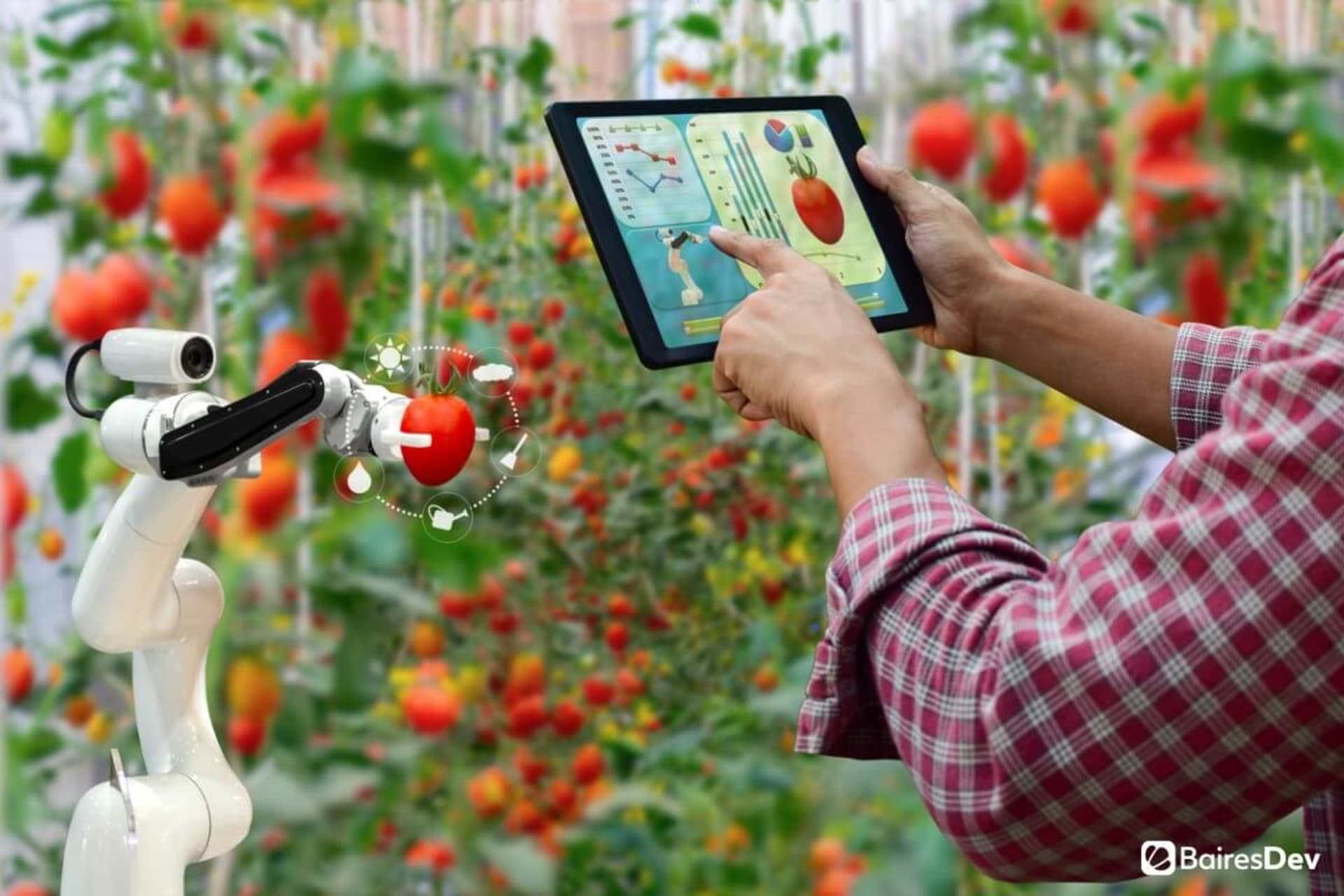The World Economic Forum predicts that in the year 2050 there will be 2 billion more people on Earth than there are today. Farmers are already coming up with innovative ways to grow the food to feed them all. One of them is vertical farming, which uses indoor spaces to stack planting trays upward like shelving units. Technology enables growers to deploy and control environmental specifications like lighting, humidity, and water and nutrient levels.
These vertical farms take advantage of land that traditional farming could never use, such as old buildings, shipping crates, and rooftops right in urban settings. In addition to growing more food, this type of farming has the advantage of delivering fresher produce to closer destinations, addressing the needs of consumers who are increasingly interested in having relationships with local growers.
Here we explore how water, nutrition, and lighting distribution systems, as well as Internet of Things (IoT) sensors and robotics, enable growers to optimize production cycles and help to meet the world’s growing demand for fresh food.
Water and Nutrition
One of the biggest benefits of vertical farming is the amount of water it saves compared to conventional farming, which is responsible for a majority of water consumption in the U.S. For example, the amount of water required to produce a pound of lettuce in a vertical farm may be less than 1% of the amount required to produce a pound of lettuce on a conventional farm. One of the reasons is that water can be captured and reclaimed to be used again.
Hydroponic vertical farming is a method that uses all water and no soil to grow plants! All the nutrients that would normally come from the soil are included in the water irrigation system that is continuously available to the plants. The growing trays include room for root systems to extend. Another growth method is aeroponic, which involves misting plant roots, rather than immersing them in water.
The following video shows this process:
Ironically, the hydroponic method uses far less water than traditional farming because the water is cycled through the system repeatedly, so there is no waste or evaporation as there is in conventional farming. Part of the technology deployed in vertical farms is used to reclaim, filter, process, and reuse water.
Hydroponic farming is still new, and growers are challenged with trying to enhance water with nutrients in a way that mimics soil. According to a recent New York Times article, “No one really knows how the soil microbiome works.” This method also “divorces food from nature” because the soil of a particular location isn’t needed to produce crops traditionally grown in that area.
Lighting
Indoor vertical farms use specialized lighting to replace the sun as an energy source. But, unlike the sun, growers have complete control over the lighting, meaning they can make adjustments to optimize their crop yield. They can create “day” and “night” conditions whenever they like and experiment with different “recipes” of light spectra that provide the best quality produce.
This lighting can be deployed in a variety of building types, including large-scale plant factories, smaller climate chambers, warehouse farms, and container farms. As added benefits produce grown indoors with this lighting is free from pests and weather that can damage crops. That means that growers can cultivate these plants pesticide-free.
While different types of lighting can be used for agricultural purposes, light-emitting diode (LED) technology has surpassed the others in quality and innovation in recent years. Growers benefit from their efficiency (up to 70% more energy efficient than other types), longevity, and affordability, which continue to improve. LED lights also put off heat, which can damage plants, so more of them can be deployed as needed throughout vertical installations.
LED lighting in vertical farming does have disadvantages, including its high initial cost. It can also cause eye damage to farmworkers, so farmers must use proper eye protection.
Sensors and Robotics
To ensure water, lighting, and other factors such as humidity are perfectly controlled, vertical farmers are using sensors, custom software, and mobile devices to monitor plant conditions. IoT technology is just the latest in technological innovations in farming, starting with handheld tools, followed by the cotton gin, grain elevators, chemical fertilizers, and satellites.
According to Business Insider, “Sensors placed in fields allow farmers to obtain detailed maps of both the topography and resources in the area, as well as variables such as acidity and temperature of the soil.” This technology can also bring in weather forecasting data to compute what kinds of changes farmers should be making to water, nutrition, and light levels. Growers can even run programs to predict what conditions might be like days or even weeks in advance.
For facilities with smaller teams, robots and drones can assist. All this technology adds up to a self-regulating microclimate that creates the perfect conditions for crops, including leafy greens, microgreens, herbs, berries, tomatoes, and more.
The Future of Vertical Farms
Vertical farming is highly beneficial in many ways. Crops can be grown closer to the people who consume them. They save water, create delicious, organic food, and reduce the amount of fossil fuels used to transport food long distances. Additionally, many of them are self-powered by solar-based microgrids, further helping the environment.
However, not all crops can be grown on vertical farms. Wheat is one example of a crop that isn’t well-suited to vertical farm development. Additionally, the heavy use of lighting and environmental systems mean that vertical farms are very energy-intensive and — if not solar powered — may not, on balance, be helpful to the environment.
While they may not be a perfect solution, vertical farms are seeing a continued interest and technological advancement that will enable them to be a vital part of feeding the world’s population in the coming decades.









